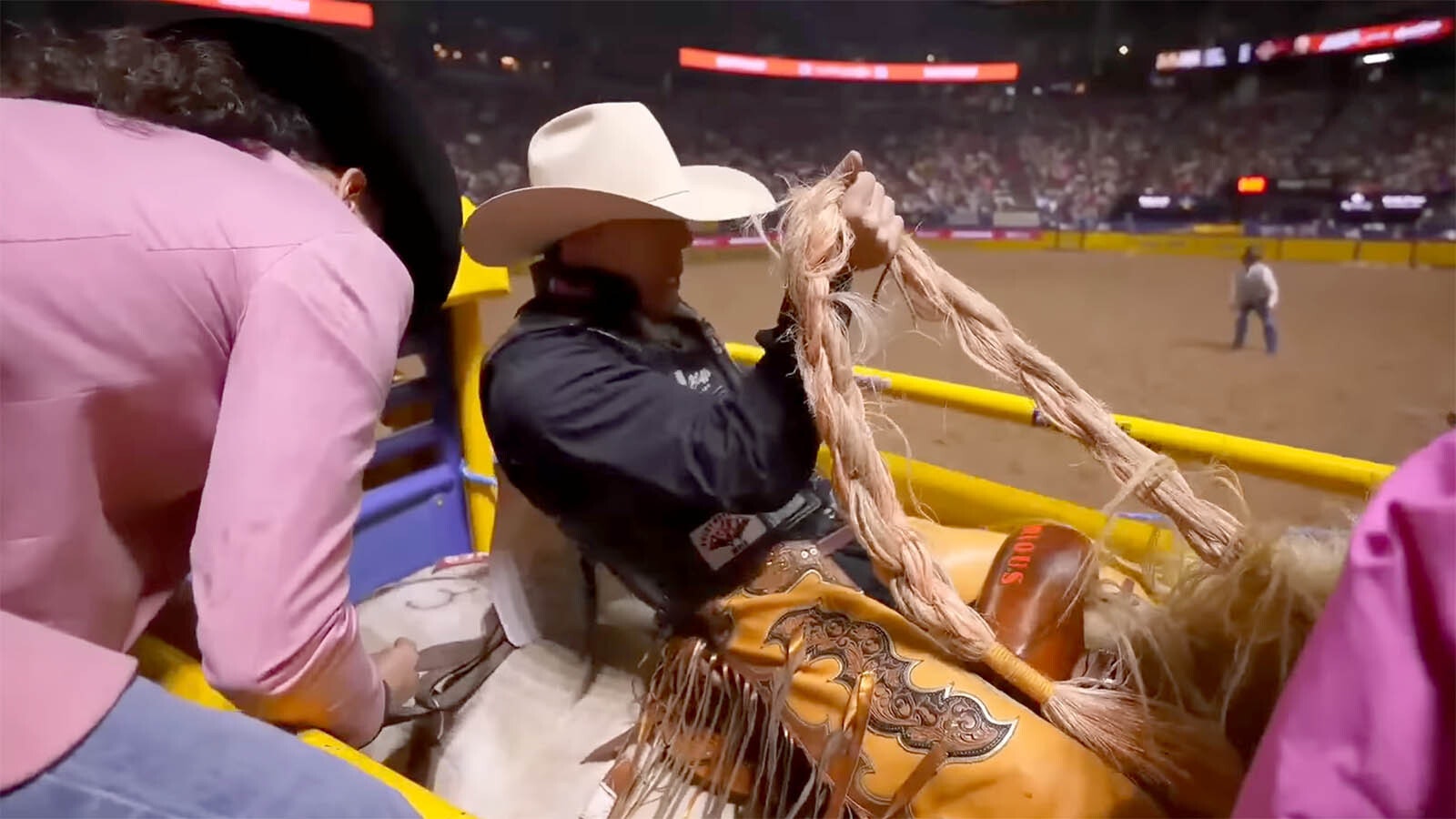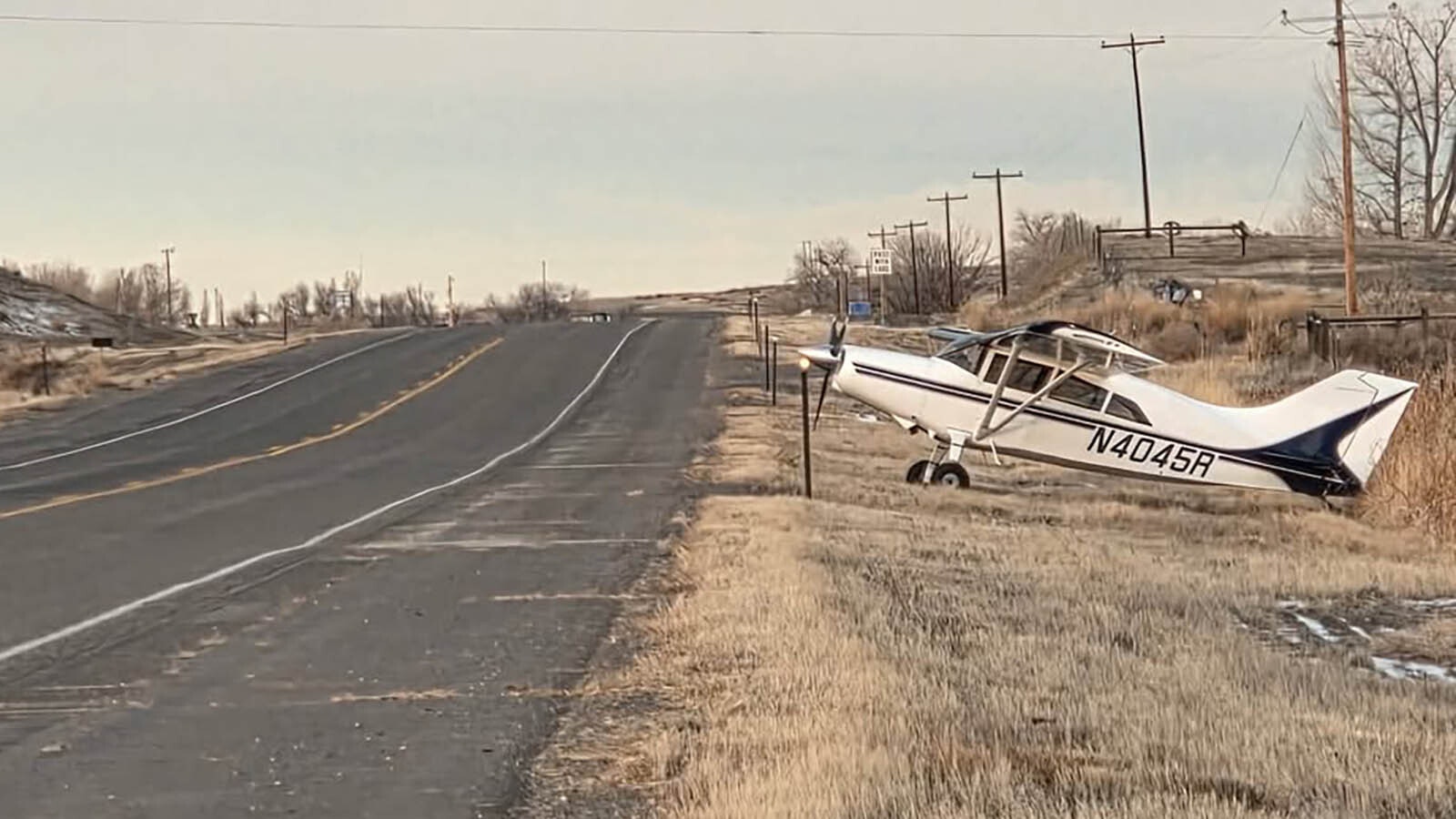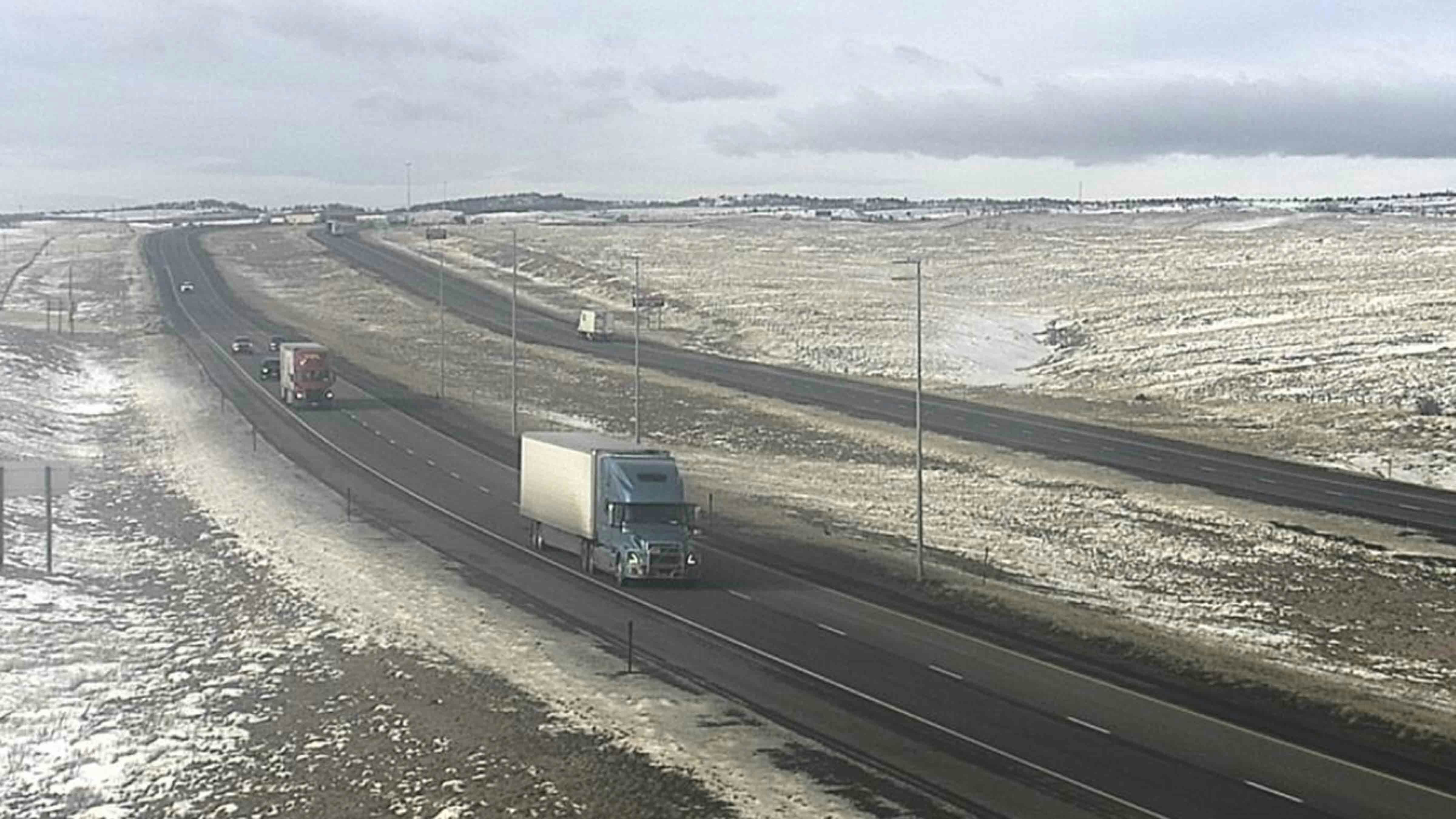The blizzard raged across Wyoming Territory as a lone courier rode through blinding snow and battled subzero temperatures to bring reinforcements from Fort Laramie.
It was December 1866, just days before Christmas, and Fort Phil Kearny was in danger of being overrun by Red Cloud’s warriors.
The soldiers were in desperate need of additional soldiers to defend the fort, but the only way to send a message was by horse.
Capt. William J. Fetterman and 81 men had been massacred by Sioux, Cheyenne, and Arapaho warriors, and General Henry B. Carrington needed to get the message out about the tragedy that had just happened.
After the veterans and soldiers of the fort refused to go, John “Portugee” Phillips volunteered to carry the message through dangerous territory.
It was said that Phillips was moved by compassion to undertake the dangerous mission by the dire circumstances of the officers’ wives who remained in the fort.
“There was just this standard story that has stuck around about Portugee’s historic ride for 140 years,” author and historian Shannon Smith told Cowboy State Daily.
It was winter with 236 miles between the forts, and the legends of his epic ride has prompted some historians to call it "the greatest ride in history." It's even on a plaque that marks the event.
Embellished Stories
Smith has found flaws with this narrative and is now sifting through the known facts and first-person accounts to separate myth from reality. For instance, there is no proof that Phillips had made the ride for the sake of the women at the fort.
According to Smith, it was Francis Carrington, wife of General Carrington, who first made the claim that Portugee Phillips’ ride had been moved by his compassion for her to risk his life on this daring mission.
“She wrote that he had come to her and said he cared about her so much that he was going to save her and run down to the Fort Laramie and protect her as this great savior,” Smith said.
The fact that Carrington had written the story of the historic ride solely for the purpose of protecting her husband’s reputation made the story itself suspect to Smith. Carrington was overseeing the fort when the massacre occurred, and his wife had been determined to salvage his reputation by controlling the narrative surrounding the event. Her book about the event was accepted as fact until modern historians like Smith started investigating.
In her book, “Give Me Eighty Men: Women and The Myth of The Fetterman Fight,” Smith has uncovered first-person accounts of how Fetterman’s reputation had been ruined after his death by the fake narratives that Francis Carrington had written. The same was true, Smith discovered, about Phillips’ ride.

Truth Mingled With Myth
On December 22, 1866, Fetterman and eighty-one men were dead on Lodge Trail Ridge. After the battle, Carrington had gone out from Fort Phil Kearny to retrieve as many of the bodies as he could.
“They weren’t able to get all the bodies off the battlefield,” Smith said. “A storm was coming, and he wanted to send somebody to Fort Reno where there was the telegraph station so Fort Laramie could be notified.”
John “Portugee” Phillips, the man chosen for the ride, was a huge personality with a reputation as a scout, trapper , and Indian fighter. He hailed from the Azores islands of Portugal, had been a gold seeker in California, before arriving in the region as a contractor for Fort Phil Kearny.
The story is told that the Sioux and their allies were holding Fort Phil Kearny under a virtual state of siege. Carrington, commanding officer of Fort Phil Kearny, was in trouble and knew it. If the Indians attacked, the small garrison would not be able to repulse them. They were dangerously low on men, ammunition , and supplies. The nearest help was at Fort Laramie, 236 miles away.
That night, a storm broke, giving a last-minute reprieve to the doomed outpost. As temperatures dropped, the snow piled around the walls so fast that details were sent out to keep shoveling it away. They were afraid Red Cloud’s warriors would be able to enter the fort by walking on the snow banks.
There was no telegraph at Fort Kearny and the only way to get a message through was by courier. The hard-bitten veteran troopers all refused when Carrington asked for volunteers. Riding that distance through hostile Indian country in a blizzard was seen as a death sentence.
That was when John “Portugee” Phillips volunteered, with stories later circulating that he volunteered only because he felt sorry for the women in the fort. It was then said that Carrington gave Phillips his personal mount, a Kentucky thoroughbred, the fastest horse on the post. Taking a handful of hardtack for himself and a bag of grain for the horse, Portugee wrapped himself in a large buffalo robe, took the horse, and slipped out into the storm.
The Historic Ride
Walking the horse at first, Phillips was said to have stopped at every suspicious sound, afraid of an Indian attack. He walked for hours before he finally felt safe enough to ride.
Phillips’ first stop was at Fort Reno , which he reached at midnight. They had no telegraph or any extra men , so he rode on.
On day two of his ride through the blizzard, Phillips made it to Horse Creek Station, 190 miles from Fort Phil Kearny and 40 miles to Laramie. Fort Laramie was telegraphed the urgent plea and reports said that the telegrapher urged Phillips to stay and rest. Phillips refused and pressed on.
Phillips’ instincts proved true because the telegraph line was down and the message did not make it through.
Phillips arrived at Fort Laramie on Christmas Eve. At “Bedlam,” the officer’s club at Fort Laramie, the annual Yuletide Ball was in progress when Phillips galloped in. He dismounted and his horse collapsed and died from exhaustion. Exhausted himself, Phillips was able to deliver his message before he, too, collapsed from the ordeal.
As he recovered, the 1st Battalion of the 18th Infantry left Fort Laramie bound for Fort Phil Kearny. Carrington and his remaining soldiers were saved.
Phillips had ridden 236 miles in two and a half days, through sub-freezing temperatures on the same mount over a snowbound wilderness. He had succeeded in his mission and saved the damsels in distress at the fort.
The Historian
Over a century later, Shannon Smith was researching the Fetterman Massacre for her book when she stumbled on stunning clues that details in Phillips’ historic ride were less than true.
In 1999, Smith was in the Love Library at the University of Nebraska-Lincoln when she requested a certain book from the Mari Sandoz Collection, a well-known writer and historian of pioneer life and the Plains Indians. The reference librarian brought her the wrong book. It was a copy of “Fort Phil Kearny: An American Saga” by Dee Brown.
“It wasn’t what I wanted so I told the librarian they were one number off on the Dewey Decimal for the book,” Smith said.
They started to take the book back to get the correct one when Smith told him or her to go ahead and leave it. She decided at the last minute to read it while the librarian searched for the original book she had requested.
When Smith looked at the cover again, she was puzzled.
“Brown’s book that I had already read was titled “The Fetterman Massacre” and I wondered why this earlier version was called Fort Phil Kearny: An American Saga,” Smith said.
The Truth
When Smith opened the book up, she saw Mari Sandoz’ handwriting scribbled in the margins. She said her heart jumped. It turned out the book was a promotional copy sent to Sandoz for her to write a positive review. Instead, Sandoz began critiquing the errors she found, filling the book with her notes.
On the flyer from the publisher describing how this book was the “definitive account” of the Fetterman Fight, Sandoz wrote in big letters “OH MY!”
“From there it went even more into detail,” Smith said. “On the inside of the cover, she writes “Many stupid errors” and lists a page and then refers to the Portugee Phillips and Wagon Box stories.”
“There is no sign Brown even looked at the Laramie Reports,” Sandoz said, referencing the Army investigation into Carrington.
Smith explained that as a historian, Sandoz was all about primary sources , while Brown was all about synthesizing other people’s work into a grand narrative.
Smith said that Sandoz had written in the margins that Phillips had an Indian wife in the Squaw Camp and was safe when riding anywhere.
“I’ve always wanted to do more research on this,” Smith said. “Sandoz interviewed several Northern Cheyenne and Lakota warriors in their old age, and I believe she would not write this if she didn’t know it for a fact.”
What this small tidbit of information did was to reshape the narrative of Phillips’ ride. While still dangerous, he was not in danger of being attacked by tribal warriors because of his marriage to one of their own. He also knew that they would not be out in the storm and would be recovering from their own battle wounds.
“While nobody else has written that he had an Indian wife, I believe that’s very likely,” Smith said. “I think that most people don’t realize that there were those who lived outside of the fort and felt safe even during this time.”
Smith believes that records might still exist to corroborate this story of Phillips living outside the fort at the time of the Fetterman battle, which is significant because it shows the strong relations that some of the people had with the tribes.
“Carrington sent records to the Department of the Platte in Omaha that may have some information about all of the residents in and around the fort,” Smith said. “I might be able to find where Phillips lived, inside or outside the stockade, and who may have lived with him.”
Myth Busting
Another myth, according to Smith, is that Phillips was alone for the duration of his historic ride. Instead, records show that Carrington sent another man named Bailey with Phillips , and both men rode to Fort Reno. At Fort Reno, Phillips continued on with another rider.
“That doesn’t detract from the fact that it was a raging blizzard,” Smith said. “And his horse did die by the time he made it to Fort Laramie.”
Her goal is not to minimize the ride but to separate truth from legend.
“Phillips’ story was also protected by a wife like Carrington,” Smith said. “He married her later in life and they lived in Cheyenne.”
Smith said that the story needs more in-depth investigation to discover what really happened.
“The cool part of this story is that, even today, there’s more we can still learn,” Smith said. “It’s a fascinating glimpse into what we still don’t know about history.”
Jackie Dorothy can be reached at jackie@cowboystatedaily.com.









